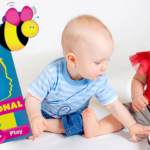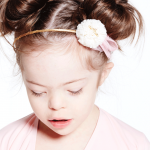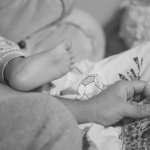
03 Jun Music and the Rhythms Of Life
Nikki Rickard writes about the benefits of music education in enhancing not only children’s intellectual development, but also their emotional wellbeing. As always, parents play a key role in encouraging music engagement in children.
Music education gives children the foundations for a lifelong love of music, and our national curriculum aims to cultivate students’ knowledge and skills as makers and appreciators of music. Learning an instrument can be a wondrous experience for children, as well as the parents and teachers who watch them conquer seemingly impenetrable barriers along the way. However, one of the surprisingly overlooked benefits of music education is its ability to improve children’s wellbeing.
 As a music psychologist, I have been researching the benefits of music for children for many years, and I believe improvements to wellbeing are at least as important as the musical outcomes of music education. With a new national curriculum almost upon us, it’s important to determine whether the shape of the curriculum allows schools room to foster the full value of music education.
As a music psychologist, I have been researching the benefits of music for children for many years, and I believe improvements to wellbeing are at least as important as the musical outcomes of music education. With a new national curriculum almost upon us, it’s important to determine whether the shape of the curriculum allows schools room to foster the full value of music education.
Research shows that music training from a young age capitalises on the plasticity of the brain, leading to enhanced connections and thicker brain matter. Music education can also facilitate learning in other areas, with musically trained children more likely to outperform other children in tests of general intelligence, memory, literacy and numeracy. But if you watch a quality music class in action, you will also notice something else.
I have witnessed many types of music classes. I give students surveys and tests, take saliva samples to test their stress hormones and talk to them and their teachers about the lessons. These studies show students often thrive in non-music-related ways. Students tell me music classes inspire confidence that helps them face other challenges in their lives, ranging from other subjects at school and troubles at home or with friends, to feel a sense of worth or belonging. “When I sing with my class and it works, it feels amazing,” said one young girl. “It’s the best. Then I believe in myself and know I can do anything.”
 In his book Flourish, American psychologist Martin Seligman contrasts what we believe is most important for our children (happiness, confidence, fulfilment, health, satisfaction and so forth) with what tends to be important in schools (achievement, thinking skills, maths, literacy, discipline, test-taking and so forth). His approach to ‘positive education’ is to ensure that as well as being good achievers, children are also taught wellbeing skills. Seligman believes wellbeing is supported by five pillars: achievement, engagement, positive emotions, positive relationships and meaning. Music education can foster each of these.
In his book Flourish, American psychologist Martin Seligman contrasts what we believe is most important for our children (happiness, confidence, fulfilment, health, satisfaction and so forth) with what tends to be important in schools (achievement, thinking skills, maths, literacy, discipline, test-taking and so forth). His approach to ‘positive education’ is to ensure that as well as being good achievers, children are also taught wellbeing skills. Seligman believes wellbeing is supported by five pillars: achievement, engagement, positive emotions, positive relationships and meaning. Music education can foster each of these.
Firstly, music offers an ideal opportunity for children to achieve. Mastering an instrument or vocal skills requires perseverance and many hours of practice. However, music education also offers a variety of skills and milestones from which children can pursue success. I’ve seen children’s enormous pride in achieving simple milestones, from the first time they’re rewarded for clapping in time to a teacher singing ‘Hot Cross Buns’, to the thrill they get pounding out the beat of ‘Kookaburra Sits in the Old Gum Tree’ in time with the rest of the class. Music can also foster achievement in non-musical abilities. For instance, in a study we conducted in rural Victorian schools, Year 3 students given an increase in the quantity and quality of their music classes for a year displayed better verbal memory and self-esteem at the end of that year than those with no extra classes. Interestingly, those students’ musical skills didn’t improve much over the year, but their active-listening skills did, suggesting that even just learning to listen to and appreciate music can enhance learning in other areas.
Just as students are often rewarded for achievements in maths or reading, musical achievements can also be satisfying and naturally engaging. Children often pursue music for their own sake, rather than for their parents or teachers. Engagement occurs when there is a connection between an individual and an activity of interest. When a child is an active participant in the class (listening to and/or making music), has an intellectual or emotional commitment to the activities, and feels they have the personal strength to face any challenges that might arise, then they are likely to feel a strong sense of fulfilment and engagement. Musicians often report being totally absorbed by their craft, time stopping for them, or being ‘in the flow’. This is not uncommon among music students, who may only retrospectively appreciate the full benefits of their music-learning experience.
Music can also be highly pleasurable. When the brain is studied while people are participating in music, it’s not just the sensory regions (involved in listening and reading music notation), motor areas (fingering, striking or strumming), or planning and memory parts of the brain that light up. Our brain’s emotion, reward and pleasure centres, which are activated when we eat chocolate or participate in other pleasurable experiences, are also triggered by music we enjoy. A number of ‘pleasure’ chemicals such as dopamine and endorphins are also released. The happiness, ecstasy, comfort or warmth we often feel from music is the most obvious sign that music can enhance wellbeing.
Music education can also help facilitate a child’s emotional development. Through music, children are exposed to a wide range of new, different and often complex emotions, which can be useful while their own emotional repertoire is developing. They may learn about emotions they have yet to experience firsthand and get a chance to practise how they might react to them before they occur in real life. Music can also be helpful in guiding children in the challenging task of emotional regulation. For instance, listening to sad music can make them feel their own sad feelings are somehow validated, and that they’re not alone in feeling them. Lyrics can give a child a greater insight into why they might be feeling confused or angry. Banging a drum or shouting out a song can help vent or release built-up frustrations while humming a favourite lullaby can be self-soothing. They learn that music is a useful strategy in managing emotions and that there are different ways to respond to difficult emotions other than crying or shouting.
Music also allows children to experience other people’s emotions and develop empathy. Children often rely on physical cues such as crying to recognise emotions in others. By exposing them to more subtle emotional cues and emotions they may not have experienced, music can also have social benefits. In a study published in 2004, Bill Thompson and colleagues from Macquarie University in Sydney found that musically trained seven-year-olds were able to recognise fear and anger in spoken phrases better than less-musical children. As part of their music-performance classes, children also need to learn how to receive critical feedback, cooperate and collaborate in bands or ensembles, achieve a common goal, and realise that each person’s part in the group is valuable. The flow-on effect is that music education can enhance positive relationships.
One of the most fundamental functions of music – a reason for its presence in every known culture, and its survival for more than 50,000 years – is as a powerful social-bonding tool. It can support the connection between mother and baby and strengthen other social bonds without the need for language. Examples include tribal dances, the unity and synchrony of an army to its marching drum, and the communal pride engendered at major sporting events by the strains of the national anthem. Music education also strives to teach children about positive relationships in the broader community – the role of music in their culture, other communities and around the world.
In some cultures and families, music defines celebrations and sad occasions and provides a sense of value or worth beyond the mundane, everyday meaning of events. Music education shows children how music can expand our knowledge of who we are and give a sense of belonging to something bigger than ourselves. For instance, children can experience a more global sense of social connection through other cultures’ music and develop an interest in volunteering or the capacity to behave more altruistically.
 In his 2011 book, Strong Experiences with Music, Swedish psychologist Alf Gabrielsson describes several such experiences. Says one student, “New worlds opened up, or the old one suddenly became rich and beautiful. Somebody interpreted my emotions, somebody offered a possibility to express something that was richer than anything I had come across so far. The pride, the defiance, the passion, the beauty. Somebody spoke a language I understood.” For another, “Without directly teaching me, he [a new music teacher] did nevertheless convey such a love of music that I understood that music could be something spiritual, an experience for the soul.”
In his 2011 book, Strong Experiences with Music, Swedish psychologist Alf Gabrielsson describes several such experiences. Says one student, “New worlds opened up, or the old one suddenly became rich and beautiful. Somebody interpreted my emotions, somebody offered a possibility to express something that was richer than anything I had come across so far. The pride, the defiance, the passion, the beauty. Somebody spoke a language I understood.” For another, “Without directly teaching me, he [a new music teacher] did nevertheless convey such a love of music that I understood that music could be something spiritual, an experience for the soul.”
So how well does the curriculum taught in our schools take advantage of the benefits of music education? The national curriculum for music (Australian Curriculum, Assessment and Reporting Authority (ACARA)), is guided by two key strands: making music (attaining knowledge and skills as a performer or composer of music), and responding to music (attaining knowledge and skills as an audience member or listener of music). Teaching about music from a range of perspectives is crucial for children to learn that it is not simply the domain of elite performers. The curriculum aims to encourage all students to participate as well as to actively listen, share and distribute music, and to appreciate that Western music is only one form. As expected, there is also a focus on achieving knowledge, understanding and skills and enabling clear assessment outcomes. However, does the curriculum also acknowledge that music is not solely an intellectual or physical pursuit?
While flourishing and wellbeing might seem to fall outside the scope of a national curriculum, ACARA has committed to providing children with core capabilities to help them contribute to a more productive, sustainable and just society. One of these is ‘personal and social capability’ (also referred to as social-emotional learning skills), aimed at helping students learn about their own emotions and strengths, and establish and maintain positive relationships.
As such, ACARA recognises that as well as teaching traditional music skills, music education involves an appreciation and exploration of how music affects our feelings and those of others. The national curriculum therefore also includes emotional and social outcomes – sharing how a piece of music feels, respecting others’ responses, imagining and recognising the character and mood of the music, and working with others to produce a performance piece. From Foundation (the term used in the Australian Curriculum to describe the first year of primary school) to Year 2, students are taught to independently engage with music – to make music that is of interest and has meaning to them, and to respond to music made by their peers and the broader community. Due to the richness and diversity of music across cultures, it also offers enormous potential to fulfil another of the core capabilities of the national curriculum, which is to promote intercultural understanding.
As always, parents play a key role in encouraging music engagement in children. Music education means more than learning to sing or play an instrument at school – it means learning to actively participate in music. Fortunately, this is something most children do naturally from infancy, and our role is to nurture this in a variety of ways.
Nikki Rickard is an Associate Professor at the School of Psychology and Psychiatry at Monash University in Melbourne.
Illustrations by Alex Wegner




